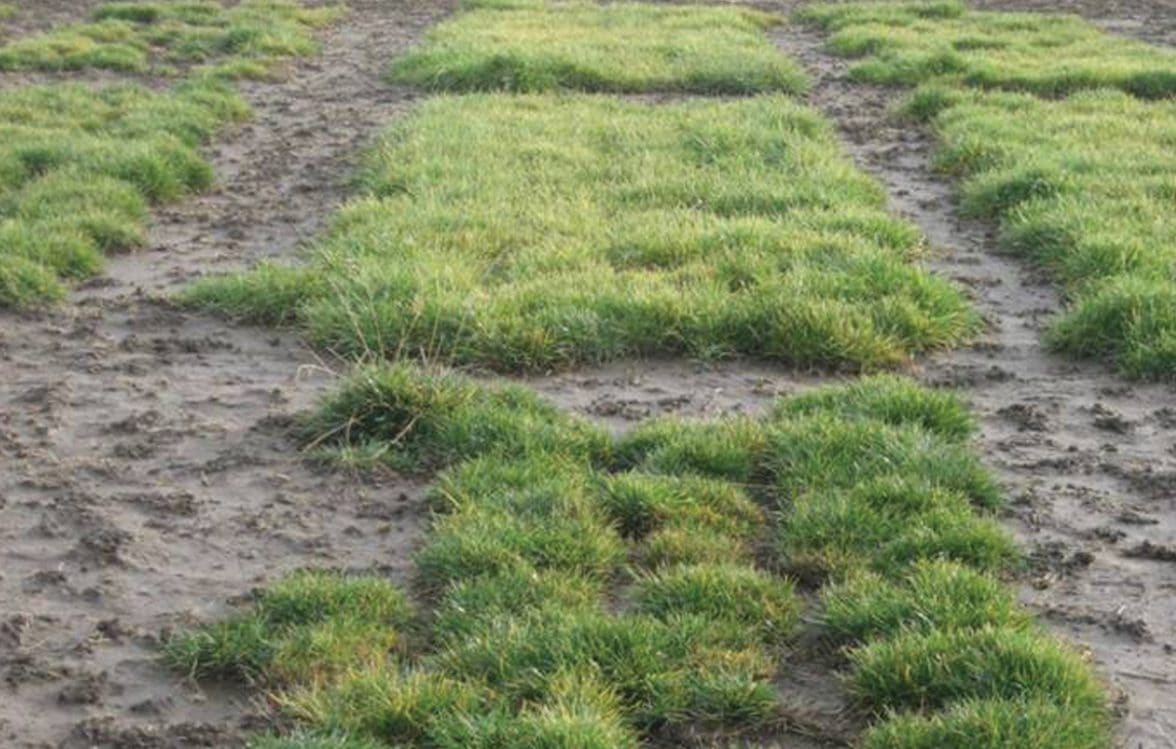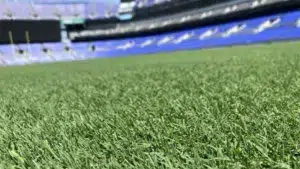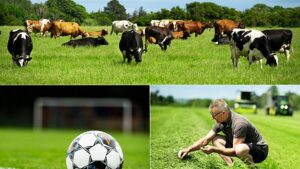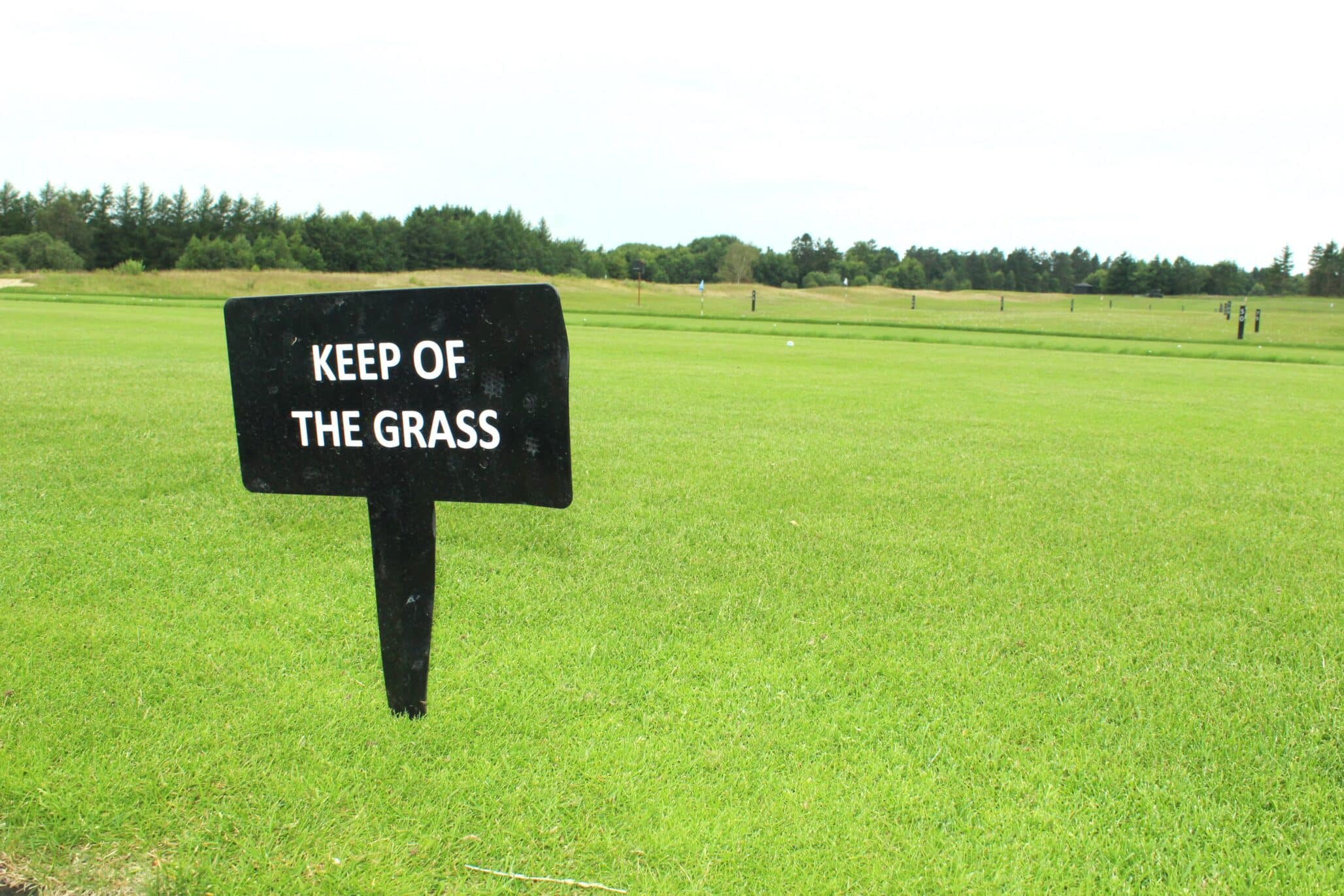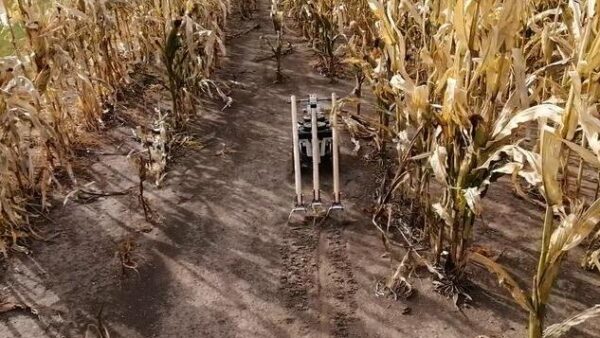A closer look at stoloniferous ryegrass for sports with intensive traffic.
Perennial ryegrass [Lolium perenne L. subsp. stoloniferum (C. Lawson) Wipff] is the most important species when dealing with high traffic and high establishment speed. Though perennial ryegrass is one of the most wear tolerant cool-season turf grasses available, the demand for more wear tolerance has increased, due to increased use of sports fields and golf courses.
Regenerating perennial ryegrass (RPR) is a subspecies of perennial ryegrass that produces stolons. Stolons can be classified into two types: determinate- and indeterminate-stolons. A
determinate-stolon is an above-ground horizontal stem, which roots at the nodes and does not produce aerial shoots indeterminately. The apical apex will eventually terminate with an inflorescence (e.g. referred to herein as Lolium perenne subsp. stoloniferum).
An indeterminate-stolon is an above-ground stem, which roots at the node and from which shoots are produced progressively. This horizontal stem will never terminate with an inflorescence, but the apical apex remains vegetative (e.g. bermudagrass and creeping bentgrass).
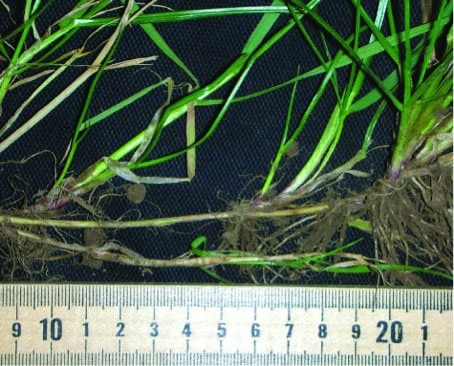
Wear Tolerance
Improvements in summer wear tolerance have been previously achieved indirectly by increasing shoot density. Winter wear on European sports pitches and golf courses has been reduced partly by empirical evaluation of wear tolerance of ryegrass varieties using artificial wear machines with studded rollers, using the most wear tolerant varieties.
Whether a variety (not developed for traffic tolerance) has some traffic tolerance is no indication that it can actually recover from traffic injury. In fact, these varieties are not able to recover from traffic damage. Thus, it is critical perennial ryegrass being used on a sports field is bred for traffic stress from the beginning. These are the conditions under which RPR, with its strong recuperative ability, was discovered: intense, long-term traffic stress.
RPR Development
The importance and benefit of RPR was realised because it was developed under intense traffic stress. Subjecting millions of genotypes for many years to intense traffic wear reduced the population to approximately 3,000 initial selections. From these initial selections, only five populations of RPR were discovered. This type of selection not only translates into better traffic tolerance, but also positive recovery potential from traffic damage because of RPR’s stoloniferous habit.
Our studies at Barenbrug have shown just because a ryegrass is stoloniferous does not mean it can recover from an intense traffic event. We discovered only stoloniferous varieties developed for traffic tolerance were able to recuperate from an intense traffic event. Although other ryegrass varieties can have some unintended traffic tolerances, they could not recover from this wear, and actually have negative recuperating potential (i.e. they don’t recover).
After the traffic simulation was completed, the varieties were then studied for their ability to recuperate from the intense traffic wear. The varieties not developed for traffic tolerance actually continued to decline; whereas, those developed under intense traffic selection protocols (i.e. RPR) did recuperate, and, in fact, increased in coverage (Figure 1). As the turf canopy is opened up by traffic, RPR begins to produce stolons to fill in the open areas. This occurrence was first reported after research was performed at Ohio State University in the United States.
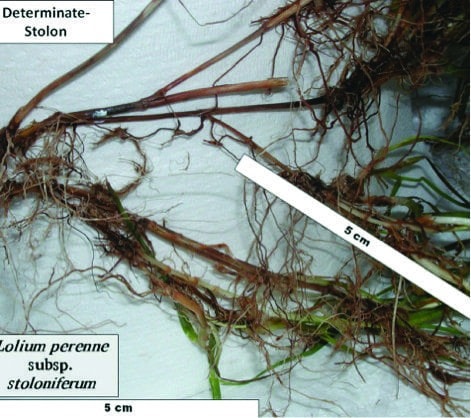
RPR Purposes
From day one RPR was developed for sports fields, sod production and intensively-used areas on golf courses (i.e. tees, fairways) with tremendous success. Feedback from sports turf managers and sod farmers indicate how much they like RPR’s performance and wear tolerance.
RPR works well in mixtures with smooth-stalked meadow grasses, fine fescues or other ryegrass species. They are especially suited to all areas where cool-season grasses are predominant. The major benefits of these grasses are achieved due to their outstanding recovery capability through the production of elongated tillers, which produce new plants. The network of stolons (Figures 2 and 3) and new plants give added tensile strength just below the soil surface.
RPR brings together strength and speed in one species. The grass plants germinate quickly and can be used intensively after the establishment of a dense sward. This means many more playing rounds on a golf course as fairways and tees can withstand more traffic.
RPR solves the issue of choosing between speed or strength. This innovation combines firmness and strength with speed of establishment and regeneration. In other words, the best of both worlds.
Editor’s Note: Arthur Wolleswinkel is product development manager for Barenbrug Holland.


